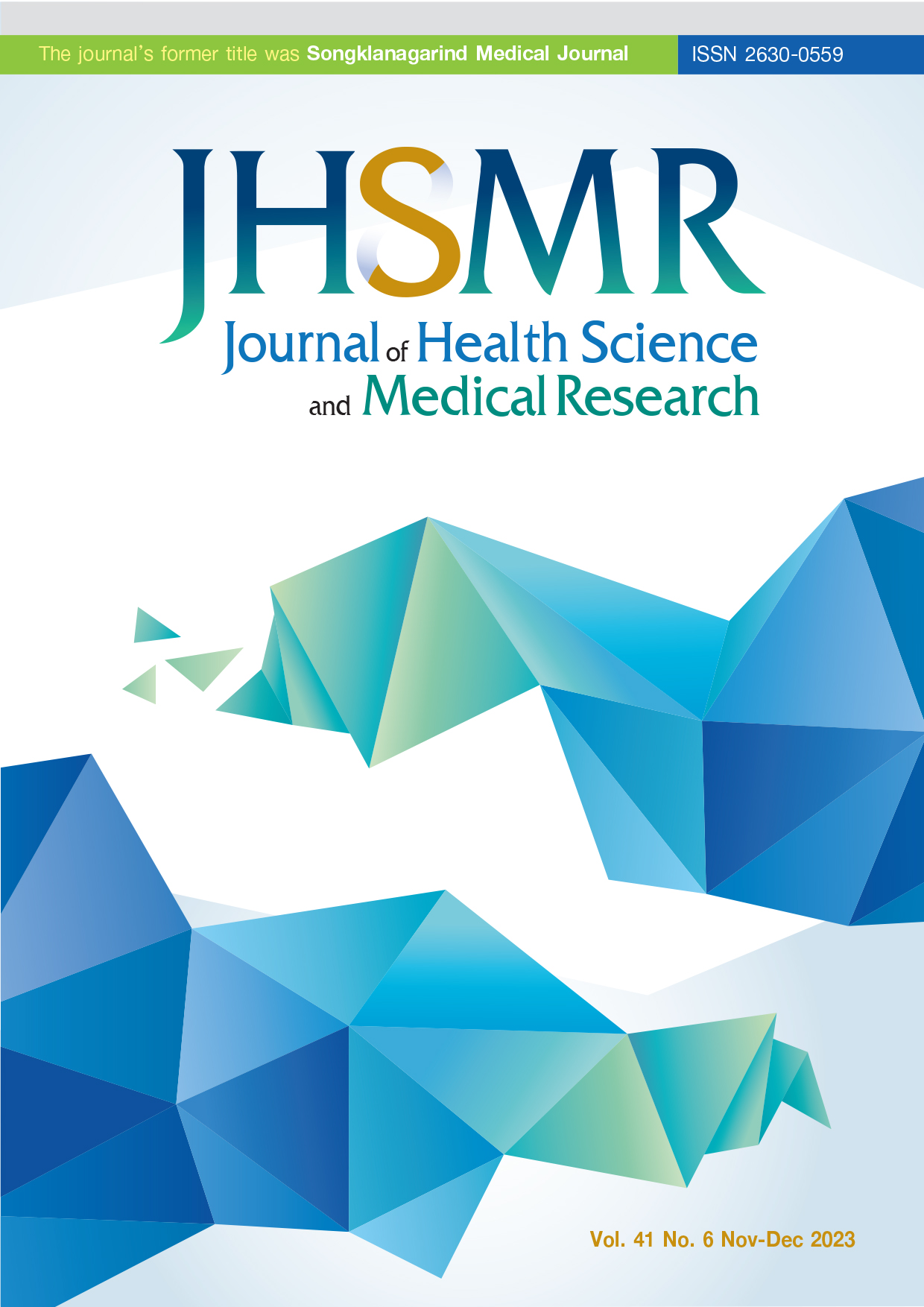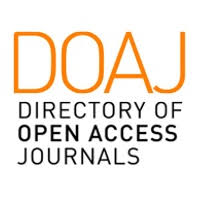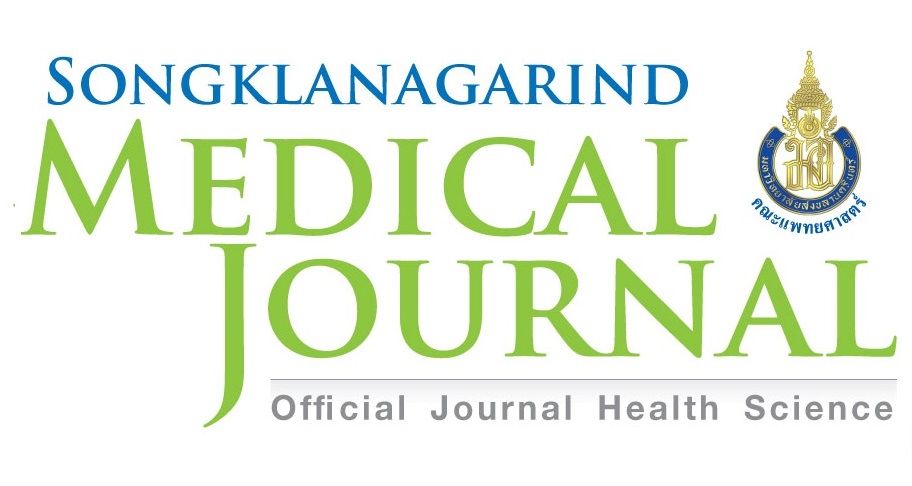Cross-Cultural Adaptation, Reliability, and Validity Tests of the Thai Version of the Manchester-Oxford Foot Questionnaire in Individuals with Chronic Foot Pain
DOI:
https://doi.org/10.31584/jhsmr.2023972Keywords:
chronic foot pain, cross-cultural adaptation, Manchester-Oxford Foot Questionnaire, reliability, Thai, validityAbstract
Objective: To adapt cross-culturally and examine the reliability and validity of the Thai version of MOXFQ (Thai-MOXFQ) among individuals with chronic foot pain.
Material and Methods: The Thai-MOXFQ was successfully adapted cross-culturally from the original version with minor changes according to the International Society for Pharmacoeconomics and Outcomes Research (ISPOR) guidelines. Its reliability and construct validity were then investigated in individuals with chronic foot pain. The test-retest reliability was evaluated among 30 participants by calculating the intraclass correlation coefficient (ICC 3,1). Meanwhile, the internal consistency of the Thai-MOXFQ was studied in 100 participants by computing Cronbach’s alpha. Additionally, the construct validity was analyzed via Spearman’s rank correlation analysis to determine the relationship between the Thai-MOXFQ, Foot and Ankle Ability Measure (FAAM), 36-item Short-Form Health Survey (SF-36), and Visual Analogue Scale (VAS).
Results: The Thai-MOXFQ demonstrated a good level of test-retest reliability (ICC of 0.763 to 0.885) and an acceptable level of internal consistency (Cronbach’s alpha of 0.738 to 0.871) when used in individuals with chronic foot pain. Moreover, the Thai-MOXFQ was shown to have moderate to strong relationships with FAAM, SF-36, and VAS (p-value<0.05, Spearman rank correlation coefficients of 0.543 to 0.711). Furthermore, the results of the construct validity of the Thai version were in line with the original English and other translated versions.
Conclusion: The Thai-MOXFQ is a reliable and valid, foot-specific, patient-reported outcome measurement (PROM) for assessing outcomes in individuals with chronic foot pain.
References
Hawke F, Burns J. Understanding the nature and mechanism of foot pain. J Foot Ankle Res 2009;2:1-11.
Treede RD, Rief W, Barke A, Aziz Q, Bennett MI, Benoliel R, et al. Chronic pain as a symptom or a disease: the IASP classification of chronic pain for the international classification of diseases (ICD-11). Pain 2019;160:19-27.
Hill CL, Gill TK, Menz HB, Taylor AW. Prevalence and correlates of foot pain in a population-based study: the Northwest Adelaide health study. J Foot Ankle Res 2008;1:2.
Dufour AB, Broe KE, Nguyen U-SDT, Gagnon DR, Hillstrom HJ, Walker AH, et al. Foot pain: is current or past shoewear a factor?. Arthritis Rheum 2009;61:1352-8.
Laslett LL, Menz HB, Otahal P, Pan F, Cicuttinic FM, Jones G. Factors associated with prevalent and incident foot pain: data from the tasmanian older adult cohort study. Maturitas 2018;118:38-43.
Menz HB. Chronic foot pain in older people. Maturitas 2016;91:110-4.
Menz HB, Morris ME, Lord SR. Foot and ankle characteristics associated with impaired balance and functional ability in older people. J Gerontol A Biol Sci Med Sci 2005;60:1546-52.
Mickle KJ, Munro BJ, Lord SR, Menz HB, Steele JR. Crosssectional analysis of foot function, functional ability, and healthrelated quality of life in older people with disabling foot pain. Arthritis Care Res (Hoboken) 2011;63:1592-8.
Vaseenon T, Intharasompan P, Wattanarojanapom T, Theeraamphon N, Auephanviriyakul S, Phisitkul P. Foot and ankle problems in Muay Thai kickboxers. J Med Assoc Thai 2015;98:65-70.
Vaseenon T, Wattanarojanapom T, Intharasompan P, Theeraamphon N, Auephanviriyakul S, Phisitkul P. Foot and ankle problems in Thai monks. J Med Assoc Thai 2015;98:71-6.
Dawson J, Doll H, Fitzpatrick R, Jenkinson C, Carr AJ. The routine use of patient reported outcome measures in healthcare settings. BMJ 2010;340:c186.
Daluiso-King G, Hebron C. Is the biopsychosocial model in musculoskeletal physiotherapy adequate? An evolutionary concept analysis. Physiother Theory Pract 2022;38:373-89.
Arunakul M, Arunakul P, Suesiritumrong C, Angthong C, Chernchujit B. Validity and Reliability of Thai Version of the Foot and Ankle Ability Measure (FAAM) Subjective Form. J Med Assoc Thai 2015;98:561-7.
Angthong C. Validity and reliability of Thai version of the Foot and Ankle Outcome Score in patients with arthritis of the foot and ankle. Foot Ankle Surg 2016;22:224-8.
Bovonsunthonchai S, Thong-On S, Vachalathiti R, Intiravoranont W, Suwannarat S, Smith R. Thai version of the foot function index: a cross-cultural adaptation with reliability and validity evaluation. BMC Sports Sci Med Rehabil 2020;12:1-12.
Dawson J, Coffey J, Doll H, Lavis G, Cooke P, Herron M, et al. A patient-based questionnaire to assess outcomes of foot surgery: validation in the context of surgery for hallux valgus. Qual Life Res 2006;15:1211-22.
Dawson J, Boller I, Doll H, Lavis G, Sharp R, Cooke P, et al. The MOXFQ patient-reported questionnaire: assessment of data quality, reliability and validity in relation to foot and ankle surgery. Foot (Edinb) 2011;21:92-102.
Morley D, Jenkinson C, Doll H, Lavis G, Sharp R, Cooke P, et al. The Manchester-Oxford Foot Questionnaire (MOXFQ): development and validation of a summary index score. Bone Joint Res 2013;2:66-9.
Dawson J, Boller I, Doll H, Lavis G, Sharp R, Cooke P, et al. Minimally important change was estimated for the Manchester– Oxford Foot Questionnaire after foot/ankle surgery. J Clin Epidemiol 2014;67:697-705.
Jia Y, Huang H, Gagnier JJ. A systematic review of measurement properties of patient-reported outcome measures for use in patients with foot or ankle diseases. Qual Life Res 2017;26:1969-2010.
Marinozzi A, Martinelli N, Panascı` M, Cancilleri F, Franceschetti E, Vincenzi B, et al. Italian translation of the Manchester-Oxford Foot Questionnaire, with re-assessment of reliability and validity. Qual Life Res 2009;18:923-7.
Mousavian A, Ebrahimzadeh MH, Birjandinejad A, Omidi-Kashani F, Kachooei AR. Translation and cultural adaptation of the Manchester-Oxford Foot Questionnaire (MOXFQ) into persian language. Foot (Edinb) 2015;25:224-7.
Garce´s JBG, Winson I, Goldhahn S, Castro MD, Swords MP, Grujic L, et al. Reliability, validity and responsiveness of the Spanish Manchester-Oxford Foot Questionnaire (MOXFQ) in patients with foot or ankle surgery. Foot Ankle Surg 2016;22:59-70.
Talu B, Bayramlar K, Bek N, Yakut Y. Validity and reliability of the Turkish version of the Manchester-Oxford Foot Questionnaire for hallux valgus deformity evaluation. Acta Orthop Traumatol Turc 2016;50:207-13.
Venkatesan S, Schotanus MGM, Hendrickx RPM. Dutch translation of the Manchester–Oxford Foot Questionnaire: reassessment of reliability and validity. J Foot Ankle Surg 2016;55:1199-201.
Arbab D, Kuhlmann K, Ringendahl H, Bouillon B, Eysel P, König D. Reliability, validity and responsiveness of the German Manchester-Oxford Foot Questionnaire (MOXFQ) in patients with foot or ankle surgery. Foot Ankle Surg 2018;24:481-5.
Park MJ, Ko YC, Huh JW, Park SH, Park Th, Park Jh. Validation of the Korean Version of the Manchester-Oxford Foot Questionnaire in Patients With Hallux Valgus. J Foot Ankle Surg 2017;56:252-4.
Cardoso DV, Dubois-Ferrière V, Hannouche D, Lübbeke A, Perneger T. Development and psychometric performance of the French language version of the Manchester-Oxford Foot Questionnaire (MOXFQ). Foot Ankle Surg 2020;26:902-6.
Ponkilainen VT, Miettinen M, Sandelin H, Lindahl J, Häkkinen AH, Toom A, et al. Structural validity of the finnish Manchester-Oxford Foot Questionnaire (MOXFQ) using the rasch model. Foot Ankle Surg 2021;27:93-100.
Ruiz-Muñoz M, González-Sánchez M, Li GZ, Cuesta-Vargas AI. Manchester-Oxford Foot Questionnaire Chinese version (MOXFQ-Ch): a validity and cross-cultural adaptation. Disabil Rehabil 2021;43:104-11.
Wild D, Grove A, Martin M, Eremenco S, McElroy S, Verjee-Lorenz A, et al. Principles of good practice for the translation and cultural adaptation process for patient-reported outcomes (PRO) measures: report of the ISPOR task force for translation and cultural adaptation. Value in Health 2005;8:94-104.
Anthoine E, Moret L, Regnault A, Sebille V, Hardouin JB. Sample size used tovalidate a scale: a review of publications on newly-developed patient reportedoutcomes measures. Health Qual Life Outcomes 2014;12:176.
Hawker GA, Mian S, Kendzerska T, French M. Measures of adult pain: Visual Analog Scale for Pain (VAS Pain), Numeric Rating Scale for Pain (NRS Pain), McGill Pain Questionnaire (MPQ), Short-Form McGill Pain Questionnaire (SF-MPQ), Chronic Pain Grade Scale (CPGS), Short Form-36 Bodily Pain Scale (SF-36 BPS), and Measure of Intermittent and Constant Osteoarthritis Pain (ICOAP). Arthritis Care Res (Hoboken) 2011;63:S240-52. doi: 10.1002/acr.20543.
Jirarattanaphochai K, Jung S, Sumananont C, Saengnipanthkul S. Reliability of the medical outcomes study short-form survey version 2.0 (Thai version) for the evaluation of low back pain patients. J Med Assoc Thai 2005;88:1355-61.
Martin RL, Davenport TE, Reischl SF, McPoil TG, Matheson JW, Wukich DK, et al. Heel pain-plantar fasciitis: revision 2014. J Orthop Sports Phys Ther 2014;44:A1-33. doi: 10.2519/jospt.2014.0303.
Gribble PA, Delahunt E, Bleakley CM, Caulfield B, Docherty CL, Fong DT, et al. Selection criteria for patients with chronic ankle instability in controlled research: a position statement of the International Ankle Consortium. J Athl Train 2014;49:121-7. doi: 10.4085/1062-6050-49.1.14.
Martin RL, Chimenti R, Cuddeford T, Houck J, Matheson JW, McDonough CM, et al. Achilles Pain, Stiffness, and Muscle Power Deficits: midportion achilles tendinopathy revision 2018. J Orthop Sports Phys Ther 2018;48:A1-38. doi: 10.2519/jospt.2018.0302.
Hecht PJ, Lin TJ. Hallux valgus. Med Clin North Am 2014;98:227-32. doi: 10.1016/j.mcna.2013.10.007.
Lavery KP, McHale KJ, Rossy WH, Theodore G. Ankle impingement. J Orthop Surg Res 2016;11:97. doi: 10.1186/s13018-016-0430-x.
Kinoshita M, Okuda R, Morikawa J, Jotoku T, Abe M. The dorsiflexion-eversion test for diagnosis of tarsal tunnel syndrome. J Bone Joint Surg Am 2001;83:1835–9.
Besse JL. Metatarsalgia. Orthop Traumatol Surg Res 2017;103:S29-39. doi: 10.1016/j.otsr.2016.06.020.
Marx RG, Menezes A, Horovitz L, Jones EC, Warren RF. A comparison of two time intervals for test-retest reliability of health status instruments. J Clin Epidemiol 2003;56:730-5. doi: 10.1016/s0895-4356(03)00084-2.
Landorf KB, Radford JA, Hudson S. Minimal important difference (MID) of two commonly used outcome measures for foot problems. J Foot Ankle Res 2010;3:7.
Koo TK, Li MY. A guideline of selecting and reporting intraclass correlation coefficients for reliability research. J Chiropr Med 2016;15:155-63.
Tavakol M, Dennick R. Making sense of Cronbach’s alpha. Int J Med Educ 2011;2:53-5.
Schober P, Boer C, Schwarte LA. Correlation coefficients: appropriate use and interpretation. Anesth Analg 2018;126:1763-8.
Arbab D, Kuhlmann K, Schnurr C, Lüring C, König D, Bouillon B. Comparison of the Manchester–Oxford Foot Questionnaire (MOXFQ) and the Self-Reported Foot and Ankle Outcome Score (SEFAS) in patients with foot or ankle surgery. Foot Ankle Surg 2019;25:361-5.
Downloads
Published
How to Cite
Issue
Section
License

This work is licensed under a Creative Commons Attribution-NonCommercial-NoDerivatives 4.0 International License.
























